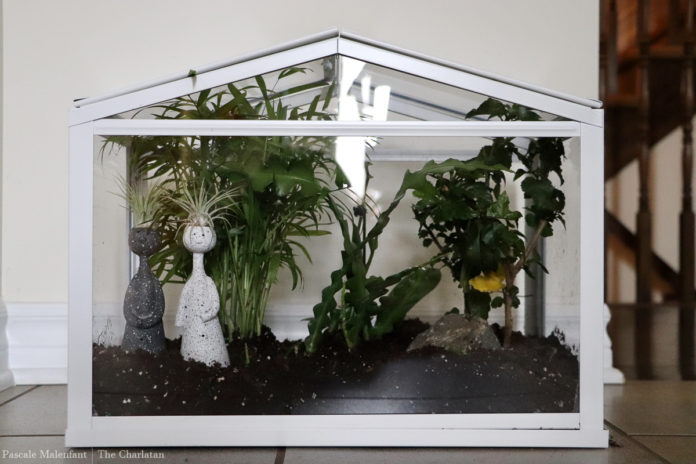
Shelley Hepworth, a biology professor at Carleton University, sees plants not just as photosynthetic organisms, but as “little green pets” you can put on your windowsill, nurture and watch bloom.
She says having plants satisfies emotional needs and brings joy. She believes the productivity associated with caring for another living thing can bring contentment, and since plants are constantly growing, “it helps us to heal and tap into our inner feelings of well-being.”
As a proud plant mom, I can relate to these statements. Pre-COVID-19, I had four plants in my room, and I just kept buying more. These new additions have made my living space brighter, warmer and more pleasant overall. Even though I am running out of space, I still want to buy more.
Recently, I noticed how much happier and calmer I have been, and it got me wondering whether there might be a scientific explanation behind my observations.
According to one study from the Journal of Environmental Horticulture, plants and greenery can not only reduce anxiety and stress, but can also foster a healthier and more productive workspace. The study also found greener spaces in school settings can improve students’ performances, attention spans, and ability to recover from stress.
This makes a lot of sense. When I started working remotely in March, I was always extremely physically and mentally drained, suffering from both a lack of motivation and a significant increase in migraines. I found that after buying more plants, I felt more optimistic and inspired.
“I think there is a very strong connection between plants and mental health,” says Hepworth. “I think plants impact mental health on multiple levels, and I think it’s a very ancient association.”
Another study from the School of Environment and Sustainability at Royal Roads University in Victoria found a connection between greenery and creativity.
The study talks about something called the “creative class,” defined as “a group of individuals who either possess high levels of education and/or are engaged in creative (scientific, artistic or technological) types of activities.” The study emphasized this class benefits greatly from—among other things—proximity to green space.
I can’t necessarily claim I am a member of the creative class, but I do feel more motivated and inspired since decorating my space with more plants. Since bringing more “little green pets” in my room, I find myself regularly waking up with one goal in mind: to make the most out of my day.
Apparently, that’s what plants are supposed to do. According to Hepworth, plants don’t simply ameliorate our emotional health—they provide a plethora of physical benefits as well.
When plants absorb toxins and carbon dioxide through their roots and leaves during photosynthesis, they leave the air and earth around them clean enough to have concrete effects on other organisms in their environments.
“If you ever walk through a forest, you can smell the air that smells exceedingly fresh,” Hepworth says.
Plants give off scent, which in some cases can be very powerful and like a natural form of aromatherapy, she adds.
An article from Live Science outlines how indoor plants can absorb more than just carbon dioxide. They can also eliminate dangerous airborne substances called volatile organic compounds (VOCs), which are found in plastics, fabrics, cigarette smoke, cosmetics, dish detergent, fabric softener and more.
“These VOCs and other indoor air pollutants (such as ozone) have been linked to numerous acute conditions, including asthma and nausea, as well as chronic diseases such as cancer and respiratory illnesses,” reads the article.
I have noticed a significant difference in my breathing since buying new plants. Before, I typically needed to use my inhaler a couple times a week. Now, I only have to use it a few times a month.
There are so many important and beneficial consequences of filling your home with plants. Besides simply bringing the beauty of nature itself indoors, there are an abundance of mental and physical health benefits.
Plus, what could be better than being a plant mom?
Featured image by Pascale Malenfant.



![Here’s how your favorite media platforms shape your world view without you realizing it Advertising revenue and subscriptions are the main source of income for news outlets. [Graphic by Sara Mizannojehdehi]](https://charlatan.ca/wp-content/uploads/2021/07/11BE7ADB-1CC8-46E8-ADB4-568B3C7F1265-218x150.jpeg)

